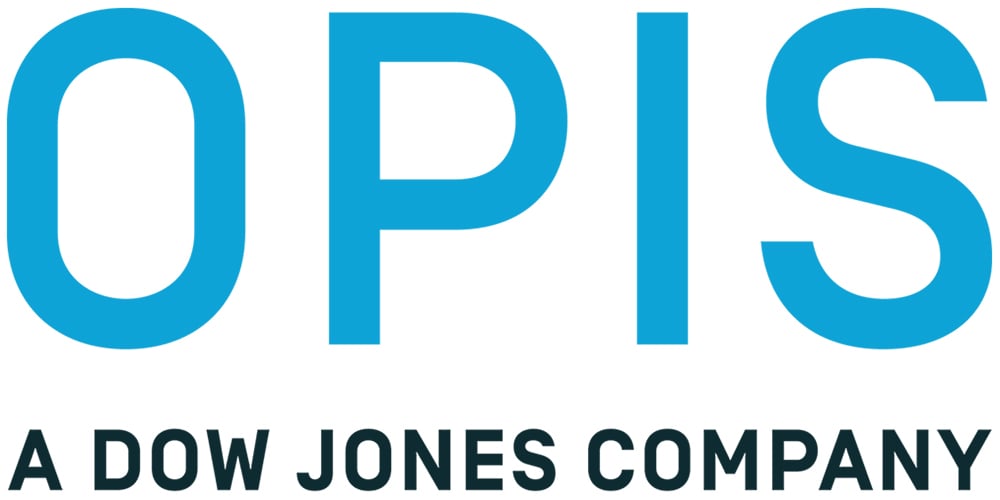Exclusive News Story
Analysis:
Gasoline Demand Recovery Unlikely, History Suggests
Tuesday, September 7, 2022
Investment houses Goldman Sachs and Bank of America predicted last month that there would be a rise in gasoline demand into the fourth quarter of 2022 and a possible return to lofty retail prices.
Analysis by OPIS, however, is somewhat dismissive of the notion that retail prices might again approach some of the levels that were seen in second-quarter 2022, ultimately leading to the greatest demand destruction since COVID lockdowns. A silver lining for the banking bulls might come in the form of an offshore demand surge that might tighten gasoline availability.
Goldman suggested in early August that high retail fuel prices were required to end global market deficits. For the first time ever, the bank introduced a retail forecast for gasoline and diesel and targeted a $4.35/gal retail average for gasoline and a price of $5.50/gal for diesel. The high demand season for diesel comes later this year, so prices would only need to rise by about 18cts/gal to hit Goldman's target.
But the $4.40/gal projection is quite challenging. U.S. gasoline prices begin the post-driving season period just under $3.78/gal, so a 62ct/gal run-up would be needed to hit the Goldman target. Through Sept. 6, average motor fuel prices dropped for 84 consecutive days in a streak that surprisingly ranks just fourth in duration.
If prices drop sequentially until Friday, the 2008 streak of 87 days will fall. A 2018/2019 streak of 91 days is the second-longest slump on record, while the 2014/2015 span of 124 consecutive days with retail gasoline price drops seems safe.
Within two weeks of the Goldman prophesy, Bank of America entitled a piece "Americans set to refill their gas tanks." Bank analysts claimed that their own proprietary credit card data chronicled a 15% fall year on year at the demand trough in June. But BofA also cited its plastic data and claimed that there was a 10% or so demand recovery in subsequent weeks.
More controversial perhaps was the BofA prediction that U.S. gasoline demand could expand by 350,000 b/d or 4% into the fourth quarter.
Could that happen? The 2022 year has brought head fakes and wild swings that suggest anything is possible in a world buffeted by crosswinds for energy prices. However, OPIS' demand surveys find no evidence of an imminent bounce. The U.S. Energy Information Administration (EIA) has had a rough summer for weekly demand statistics, but the monthly assessments are still regarded as the gold standard for final demand assessments.
Here is a look at 21st Century demand performance:
21st Century Post Driving Season Demand Trends
| Year | August | September | +/- Change |
| 2000 | 8.921 | 8.518 | -403,000 b/d |
| 2001 | 8.953 | 8.557 | -396,000 b/d |
| 2002 | 9.313 | 8.687 | -626,000 b/d |
| 2003 | 9.411 | 8.926 | -485,000 b/d |
| 2004 | 9.327 | 9.097 | -230,000 b/d |
| 2005 | 9.537 | 8.915 | -622,000 b/d |
| 2006 | 9.564 | 9.236 | -328,000 b/d |
| 2007 | 9.582 | 9.254 | -328,000 b/d |
| 2008 | 9.134 | 8.497 | -637,000 b/d |
| 2009 | 9.295 | 8.911 | -384,000 b/d |
| 2010 | 9.255 | 9.112 | -143,000 b/d |
| 2011 | 8.925 | 8.744 | -181,000 b/d |
| 2012 | 9.124 | 8.561 | -563,000 b/d |
| 2013 | 9.124 | 8.946 | -178,000 b/d |
| 2014 | 9.311 | 8.822 | -489,000 b/d |
| 2015 | 9.460 | 9.289 | -171,000 b/d |
| 2016 | 9.687 | 9.484 | -203,000 b/d |
| 2017 | 9.752 | 9.357 | -395,000 b/d |
| 2018 | 9.778 | 9.153 | -625,000 b/d |
| 2019 | 9.834 | 9.198 | -636,000 b/d |
| 2020 | 8.524 | 8.541 | +17,000 b/d |
| 2021 | 9.182 | 8.932 | -249,000 b/d |
Historical EIA data does not show a statistical track record that is supportive of Goldman Sachs or BofA optimism.
Only once -- in the COVID year of 2020 -- has gasoline demand risen from August to September. That increase amounted to a paltry 17,000 b/d, reflecting an increase of just 0.019% for consumption.
August represented the pinnacle of yearly demand in 2000, 2002, 2003, 2005, 2009, 2012, 2014, 2016, 2018 and 2019. What's more, the August number was within 100,000 b/d of the high-water mark in an additional eight years.
This year will feature full employment and could see a small catalyst from back-to-work policies for large companies. But it's clear that if prices are to recover and approach the targets of some of the big bullish banks, most of the levers will be on the supply side of the equation.
However, there is a wildcard that has surfaced this summer, and if it continues into autumn, it might work some magic. The import/export market has flipped to where U.S. companies are exporting about one more cargo of gasoline than they import.
Weekly data can be skewed, but the four weeks of August 2022 data show gasoline imports (finished and unfinished gasoline) totaling just 627,000 b/d, down from 970,000 b/d in August 2021. Gasoline exports, meanwhile, totaled 997,000 b/d in the four weeks measured by EIA this August. That compares to about 694,000 b/d in August 2021.
So the cargo totals have flipped to where U.S. companies are the net exporters of about one more cargo each month than they are importing. That kicks up the overall consumption figure for gasoline by about 370,000 b/d based on the most recent numbers. Put another way, the net demand for U.S. gasoline might approach 9.4 million b/d this autumn, if import/export trends persist.
Discover localized sales trends including volume performance and profitability.
OPIS DemandPro allows you to gauge retail sales within your market and not against an estimated national average.



